Wildfires in Canada have been causing widespread damage and posing risks to air quality, not only in the country but also in neighboring regions. The smoke from Canadian wildfires could impact your travel plans across the United States for months to come. The smoke can lead to poor visibility, respiratory difficulties, and changes in local air quality conditions. Understanding the risks and implications is essential for those planning to travel to or through the affected areas.
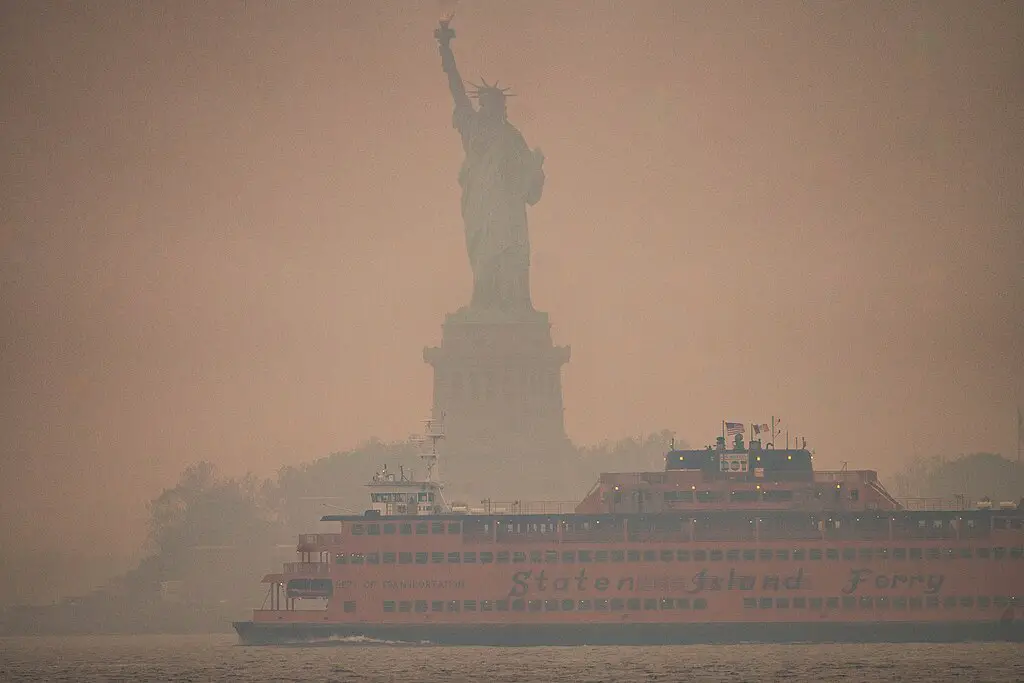
The smoke from Canadian wildfires has been known to travel long distances, reaching as far as the American Midwest and even Europe, impacting millions of people in its path. Airborne particles, such as PM2.5, can cause short-term health effects like irritation of the eyes, nose, and throat, as well as coughing and sneezing. These particles can also exacerbate existing health conditions like asthma and heart disease.
Travelers must stay informed about the latest local air quality advisories and wildfire updates. Being prepared and adaptable may help minimize the impact of the smoke on health and travel plans. It is crucial to assess the situation in the destination and transit areas before embarking on a journey during wildfire season, ensuring a safer and more enjoyable experience.
Impact on Air Quality and Health
The smoke from Canadian wildfires has a significant impact on air quality and health in affected areas, especially for travelers who may be unprepared for such conditions. The pollutants from the fires can increase particulate matter in the air, causing a variety of health issues and worsening existing respiratory conditions in sensitive individuals. This has led to increased air quality alerts and warnings in many US regions, where the smoke has caused a higher concentration of fine particles in the air.
Air Quality Alerts
The smoke from Canadian wildfires can trigger air quality alerts in affected areas. Health agencies issue these alerts when the air pollution levels are hazardous to public health, particularly for those with pre-existing respiratory issues, pregnant individuals, elderly, and children. The alerts aim to inform the public and travelers so that they can take necessary precautions, such as staying indoors or using air purifying equipment.
Authorities often use the Air Quality Index (AQI) to gauge the severity of air pollution and guide the issuance of air quality alerts. The index takes into account several factors, including the concentration and type of pollutants in the air. When the AQI reaches unsatisfactory levels, air quality warnings may be further supplemented by instructing people to limit outdoor activities or to wear proper respiratory protection, such as N95 masks.
Air Quality Indexes
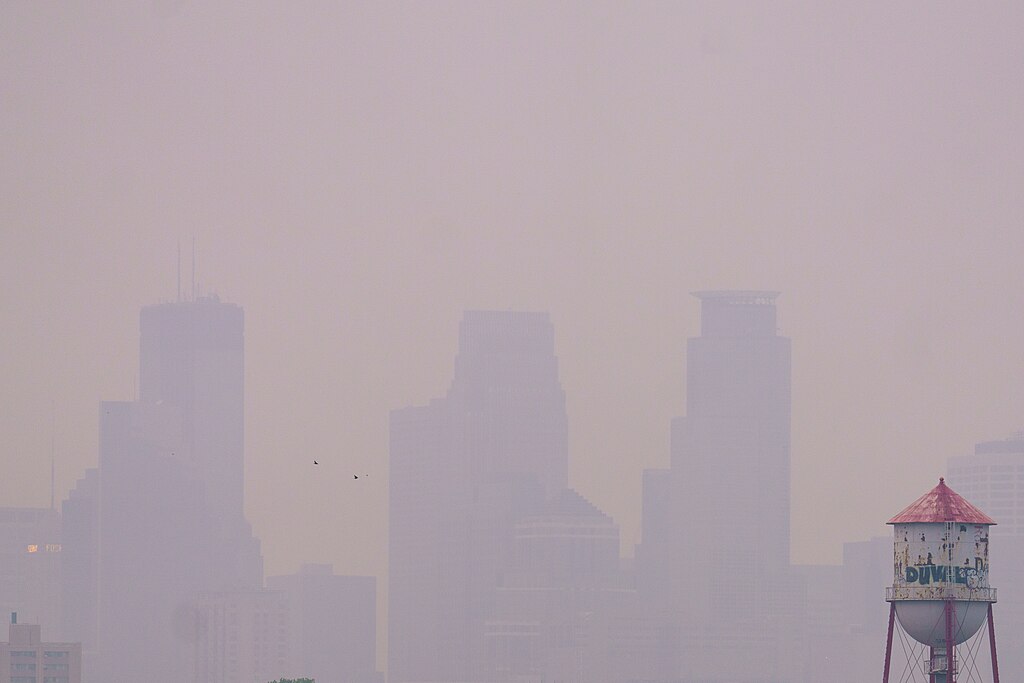
The Air Quality Index (AQI) is a globally recognized numerical scale that measures air pollution levels and potential health risks associated with them. The scale ranges from 0 to 500, with higher values indicating more hazardous air quality. Categories of concern in relation to the AQI include:
- Good (0-50): Minimal risk to public health
- Moderate (51-100): Acceptable air quality, but certain individuals with higher sensitivity may experience health effects
- Unhealthy for Sensitive Groups (101-150): At-risk individuals may experience health impacts, while the general public is unlikely to be affected
- Unhealthy (151-200): General public may experience health effects, while sensitive groups may experience more serious effects
- Very Unhealthy (201-300): More significant health impacts for all individuals, with emergency conditions possible
- Hazardous (301-500): Major public health risk, with serious health effects expected for all individuals
During Canadian wildfire events, smoke has been known to reach as far as Europe. However, the health risks from this smoke are generally lower in Europe, as the smoke often remains at a higher altitude, causing less direct exposure to the affected population.
Traveling Through Smoke-Affected Regions
Airports and Flights Impacted
Smoke from Canadian wildfires has the potential to disrupt air travel across North America and even parts of Europe. Major cities like New York, Washington, Detroit, Chicago, and Cleveland have experienced haze and reduced air quality due to smoke traveling south from eastern Canadian provinces. This can cause flight delays and cancellations as airlines prioritize safety.
Road Travel Considerations
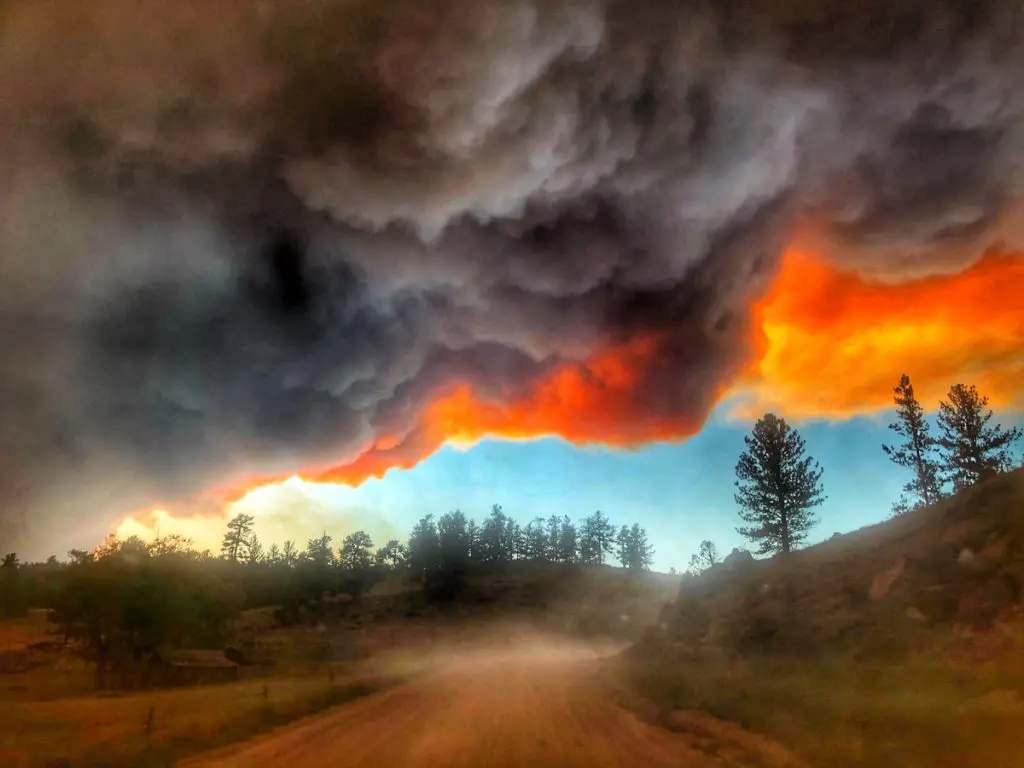
For those planning road trips in areas affected by wildfire smoke, such as Michigan, Indiana, Pennsylvania, Wisconsin, Ontario, and Quebec, it is essential to check local air quality and visibility conditions before setting out. Smoke can pose risks to driving, including obscured visibility and health impacts, especially for sensitive individuals like children, the elderly, and those with pre-existing respiratory conditions.
Impacts to Outdoor Activities
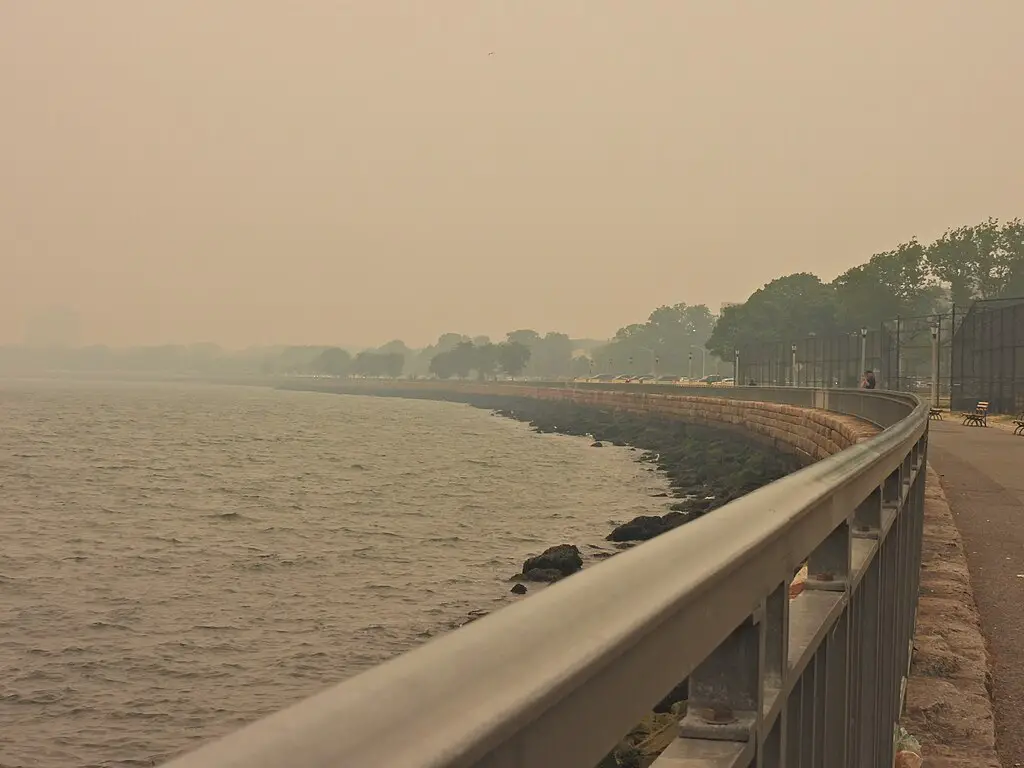
The smoke from Canadian wildfires has not only affected air travel and road conditions but also impacted outdoor events and activities across the Great Lakes and Mid-Atlantic regions. Sporting events, concerts, and other outdoor gatherings may be disrupted, postponed, or canceled due to poor air quality and visibility concerns. Event organizers and attendees should monitor local air quality reports and stay informed about any potential changes to scheduled activities.
Health Effects and Precautions
Individuals Most at Risk from Smoke
Wildfire smoke can impact travelers differently, but certain groups of people are more susceptible to its impacts. Those most at risk include individuals with respiratory illnesses such as asthma, individuals with heart disease, and older adults. Additionally, children and pregnant women may also be more vulnerable to the adverse effects of wildfire smoke due to their developing respiratory systems and increased oxygen demands, respectively.
Symptoms of Wildfire Smoke and Remedies
The fine particulate matter (PM 2.5) in wildfire smoke can lead to a range of health effects, even for healthy individuals. Short-term effects may consist of irritation of the eyes, nose, and throat, as well as coughing, sneezing, and shortness of breath. Long-term exposure to wildfire smoke can exacerbate existing health conditions like asthma and heart disease.
Travelers should keep an eye on air quality reports from sources like the National Weather Service and Environmental Protection Agency. When air quality is poor, it is crucial to minimize exposure to the smoke. Staying indoors, closing windows, and using air purifiers with HEPA filters can help keep the indoor environment clear. It is also advised to avoid strenuous activities, which can increase the risk of inhaling the fine particles in smoke.
Respiratory Relief
For immediate relief from irritation in the nose and throat, saline nasal sprays and throat lozenges can be used to soothe and hydrate affected areas. Over-the-counter antihistamines and decongestants might also be helpful for those experiencing allergic reactions or congestion from wildfire smoke exposure.
Protecting Your Eyes from Smoke
Smoke can cause eye irritation and discomfort. Using artificial tears or over-the-counter lubricating eye drops can help alleviate dryness and irritation. It is also a good idea to wear protective eyewear when venturing outdoors during smoky conditions, as well as to avoid rubbing your eyes, as this can worsen irritation.
As wildfire smoke from Canadian provinces continues to affect areas like New York City and other regions, understanding these health effects and precautions can go a long way in protecting the well-being of travelers and residents alike.
Wildfire Management and Contributing Factors
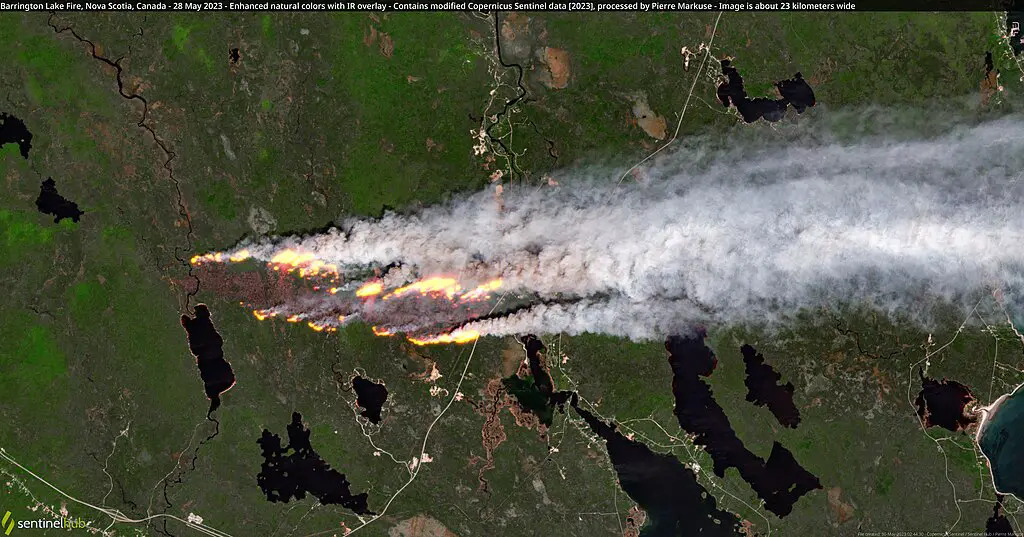
Firefighting Strategies
Canadian wildfires have become an increasingly major concern for travelers due to the impact on air quality and safety. Firefighters utilize various strategies to control and extinguish these blazes, such as creating firebreaks, utilizing aircraft to drop water and fire retardant, and employing ground crews to battle the flames directly. However, the intensity and scale of these fires often challenge firefighting efforts, which underscores the importance of adequate resources and international cooperation in combating these wildfires1.
Climate Change and Its Role in Canadian Fires
A significant factor contributing to the increase in Canadian wildfires is climate change. The warming global climate has led to hotter and drier conditions, creating an environment conducive to wildfires2. Moreover, these conditions also exacerbate fires once they have started, making them more difficult to control. The resulting heavy smoke and particulate matter from these fires not only pose significant health risks3 but also impact air quality across the Northeast, affecting millions of people, including travelers4.
Wildfire Smoke’s Influence on Weather Patterns
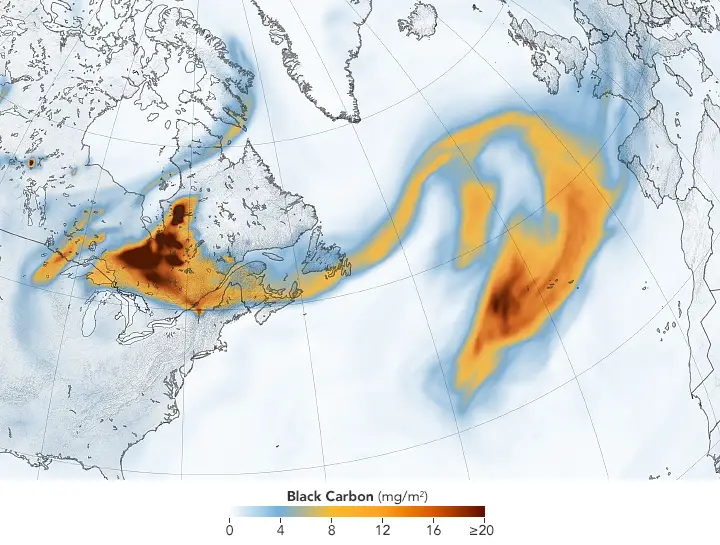
Smoke particles from the blazes can alter the atmosphere, leading to dry and windy conditions5. When large amounts of particulate matter are present in the upper levels of the atmosphere, they can cause temperature changes by blocking or scattering sunlight, resulting in cooler days and warmer nights6. Keep this impact of wildfires in mind as you pack for your next trip.
Moreover, particle pollution from wildfires can affect atmospheric conditions far across the globe. For example, communities in the UK have experienced the effects of smoke from Canada wildfires, as it travels across the ocean5. This long-range transportation of smoke particles can alter weather patterns in distant regions such as the Ohio Valley and Appalachian Mountains8.
Scientists studying the phenomenon have observed that smoke from wildfires can influence sunrises and sunsets, making them more vibrant due to the way particulate matter scatters sunlight. Such aesthetic changes, however, come at the cost of potential air quality issues for sensitive groups, such as those with respiratory conditions9.
Before you travel it’s crucial you understand the effects of smoke from Canadian wildfires on the environment, as it can impact visibility and alter weather patterns, potentially leading to challenges during their journey and major health concerns for many.
Frequently Asked Questions
Is the air quality affected near travel destinations?
The air quality near travel destinations may be affected by smoke from Canadian wildfires. In some cases, the pollution has been seen as far away as Europe. Depending on the wind conditions and proximity to the fire, smoke concentrations can vary significantly.
What precautions should travelers take due to the smoke from Canadian wildfires?
Travelers should stay informed about air quality in their destination and be prepared to take necessary precautions. This may include staying indoors during periods of poor air quality, using air purifiers, wearing masks, and carrying medications for respiratory issues, if needed. Practical tips include taking Ubers or other transportation to avoid long walks across town and avoiding outdoor seating at restaurants to avoid prolonged exposure. It’s essential to follow local authorities’ recommendations and obey any restrictions or advisories.
Are there any travel advisories for the affected regions?
Travel advisories may be issued for affected regions due to the wildfires. It is essential to check official government or embassy websites for the most up-to-date information about potential travel restrictions or safety concerns. Closely monitoring the situation can help travelers avoid disruptions to their plans and ensure their safety.
How can one stay updated on the Canadian wildfire situation?
To stay updated, travelers should monitor local news sources and follow the updates from relevant authorities. Websites such as Environment Canada and the Canadian Interagency Forest Fire Centre provide reliable information on the current status of wildfires and air quality.
Are there any health risks for travelers due to the smoke from wildfires?
There may be health risks for travelers exposed to wildfire smoke, especially for those with preexisting respiratory conditions or sensitivities. Wildfire smoke contains various particles and chemicals that can cause health effects such as irritation of the eyes, nose, and throat, coughing, shortness of breath, and worsening of pre-existing respiratory conditions. In case of any health issues, travelers should seek medical help promptly.
Footnotes
- Wildfire, Smoke, and Health | National Collaborating Centre for … – NCCEH ↩
- Canada Wildfires Are Still Burning—Why and When Will it End? – Newsweek ↩
- Wildfires Are Affecting Millions: How Smoke Exposure Affects … – Forbes ↩
- Wildfire smoke map: Forecast shows which US cities, states are being … ↩
- NY Times – What to Know About Canadian Wildfires and U.S. Air Quality ↩
- ABC News – Toxic smoke from Canadian wildfires ↩
- Euronews – Smoke from Canada’s wildfires has reached Europe ↩
- National Weather Service – Smoke from Canadian Wildfires ↩
- NOAA – Wildfire Smoke and Air Quality ↩
